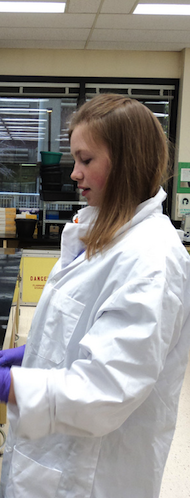Team:Alberta/human practices/safety
From 2010.igem.org
BioSafety Issues
Would any of your project ideas raise safety issues in terms of researcher safety, public safety, or environmental safety?
Our project does not pose any safety issues to the above groups. The strain of E.coli we are using, DH5α, is harmless. Genomikon involves taking E. coli into public institutions such as high school meaning that societal perceptions are important. Society is often apprehensive when it comes to E. coli, as it has the stereotype of always posing a health risk. Therefore it is important to educate individuals. We have created [http://www.genomikon.ca/encyclopaedias encyclopaedia articles] for students and teachers to view with descriptive images, and videos, explaining why our experiments are safe. Safety procedures such as wearing gloves, disinfecting surfaces and agar plates with 10% bleach are also outlined in the articles to ensure a safe learning experience for the students.
Do any of the new BioBrick parts (or devices) that you made this year raise any safety issues?
None of the parts constructed pose any safety risks. Each Brick is perfectly safe to transform into any bacterium.
Is there a local biosafety group, committee, or review board at your institution?
The office of Environment Health & Safety is designated to look after all biosafety issues at the University of Alberta. Our designate is Kim Ellison from the Department of Medical Microbiology and Immunology (MMI). She is always available while we are in the lab, should we have an incident or require material safety data sheets. The Department also orchestrated a mandatory “Safety in the Lab” training session for our team members prior to beginning work in the wet lab. We are proud to have the support of the Department of MMI and Environment Health & Safety. They have approved our laboratory methods and space in addition to our project in general.
Do you have any other ideas how to deal with safety issues that could be useful for future iGEM competitions?
A significant part of promoting synthetic biology will be educating the media on how our practices are safe. Any opportunity for iGEM teams to explain their project to non-scientists is beneficial. Perhaps a gold medal human practices requirement could be for each team to tour a media representative (for example a journalist) through their lab and thoroughly explain the safety procedures in place as well as their project. In this way, myths regarding synthetic biology’s negative stereotypes can be changed.
How could parts, devices and systems be made even safer through biosafety engineering?
A common characteristic of bacteria is the ability to transfer genes between other bacteria. Teams should take this into consideration when submitting their parts. Genes should be made so that they can only function if there are specific conditions in place. Although iGEM only deals with low risk organisms, teams should also make sure that there are no dangerous substances being produced as side products that could cause mutations to occur. One way to test this could be to instate that every team complete an AMES test.
 "
"

